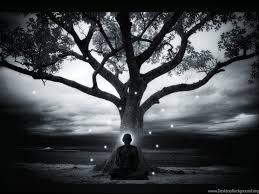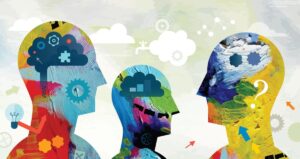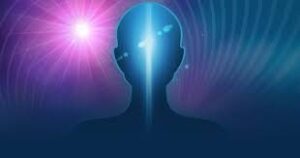HYPOTHESIS: You can learn to connect with the divine energies in a purposeful way.
Now, our form of meditation is quite simple. The goal is to connect with the stream of divine information, purposefully. You are already accessing divine information as you sleep. This experiment may assist you in creating rituals of contact and communication with the divine source through what we broadly define as meditation. First let me remind you that you will be encountering ecstatic states of consciousness. Your relaxed position in your chair, on your couch or pillow, will appear to others as though you are in an ecstatic state, and indeed you shall be.
PERFORM YOUR RITUAL OF SANCTUARY
To get a feel for this sitting posture, sit down in your comfortable chair or other structure with your feet flat on the floor. If the chair has armrests, rest your forearms upon the armrests or simply rest your arms and hands in your lap. Now the torso should be balance comfortably on the hips, pelvis and seat.
The most important aspect of this meditation position is this: the head should be resting on the neck slightly to either the left or right-side. The head should be tilted back slightly, again, as though you were experiencing ecstatic states. To others, it would appear as though you were profoundly relaxed and content though not asleep, not unconscious. You have one foot in the physical and one foot in the metaphysical domains.
Now your intent is very important here. Simultaneously, as you create the relaxed body posture for meditation, you are focusing on creating the connection to the divine. This will be unique to the individual. I have described this as “embodying” the divine in this present blog.
With your imagination you will use your powers of creativity to establish the “divine connection.” You will know it when you sense it. The loving emotions will be quite noticeable – the wave of ecstasy just below the surface. As you notice this pleasant feeling, the divine information will no doubt begin to stream into your Etheric Body through the physical channel between your eyes. By keeping free from distractions, you may continue to “drink in” these energies for as long as you wish, though fifteen minutes to an hour per session is adequate.
Now this stream may cease on its own and you will come to Third-Dimensional consciousness soon afterward. Or you may simply have the intention to come out after a specific amount of time and you shall. Simply suggest to yourself that you will come out at a specific time, before you begin the meditation.
It also a good practice to not attempt an intellectual analysis of the meditation session immediately afterward. Give yourself some time. The energies will play out within your Etheric Body over time, and you really needn’t try to investigate how you are doing. The positive changes that will occur in your life as you meditate regularly shall in all probability be enough proof that your behaviors in this matter are worth the time and effort.
This is primarily a receptive exercise or experiment, in other words. You are allowing the divine energies of All That Is to wash over you, to cleanse and to heal.
FINDINGS – Document the results of your experiments with mediation. After you have gained some proficiency, verify for future reference, what you feel and think during and after the sessions.


















































































